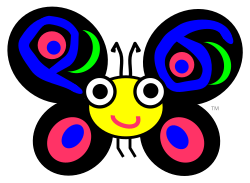Perl 6

Camelia, the Perl 6 mascot
|
|
| Paradigm | Multi-paradigm |
|---|---|
| Family | Perl |
| Designed by | Larry Wall |
| Developer | Perl 6 community |
| First appeared | December 25, 2015 |
| Stable release |
Rakudo Star 2017.01 / January 30, 2017
|
| Typing discipline | dynamic, gradual |
| OS | Cross-platform |
| License | GNU General Public License or Artistic License |
| Filename extensions | .p6, .pl6, .pm6 |
| Website | perl6 |
| Major implementations | |
| Rakudo | |
| Influenced by | |
| Haskell,JavaScript, Perl 5, Ruby, Smalltalk | |
| Influenced | |
| Perl 5,Haskell, AntLang | |
Perl 6 is a member of the Perl family of programming languages.
While historically several interpreter and compiler implementations were being written, today only the Rakudo Perl implementation is in active development.
It is introducing elements of many modern and historical languages. Compatibility with Perl 5 is not a goal, though a compatibility mode is part of the specification. The design process for Perl 6 began in 2000. In February 2015 a post on The Perl Foundation blog stated that "The Perl6 team will attempt to get a development release of version 1.0 available for Larry's birthday in September and a Version 1.0 release by Christmas", and on December 25, 2015, the first stable version of the specification was announced.
Development on Pugs, the first high-traction implementation, began in 2005, and there have been multiple Perl 6 implementation projects. Rakudo Perl is based on NQP (Not Quite Perl) and can use MoarVM or the Java Virtual Machine as a runtime environment, and releases a new version every month; in July 2010, the project released the first Rakudo Star distribution, a useful and usable collection of a Perl 6 implementation and related materials. Larry Wall maintains a reference grammar known as STD.pm6, written in Perl 6 and bootstrapped with Perl 5.
In Perl 6, we decided it would be better to fix the language than fix the user
The Perl 6 design process was first announced on July 19, 2000, on the fourth day of that year's Perl Conference, by Larry Wall in his State of the Onion 2000 talk. At that time, the primary goals were to remove "historical warts" from the language; "easy things should stay easy, hard things should get easier, and impossible things should get hard;" a general cleanup of the internal design and APIs. The process began with a series of requests for comments or "RFCs". This process was open to all contributors, and left no aspect of the language closed to change.
...
Wikipedia
